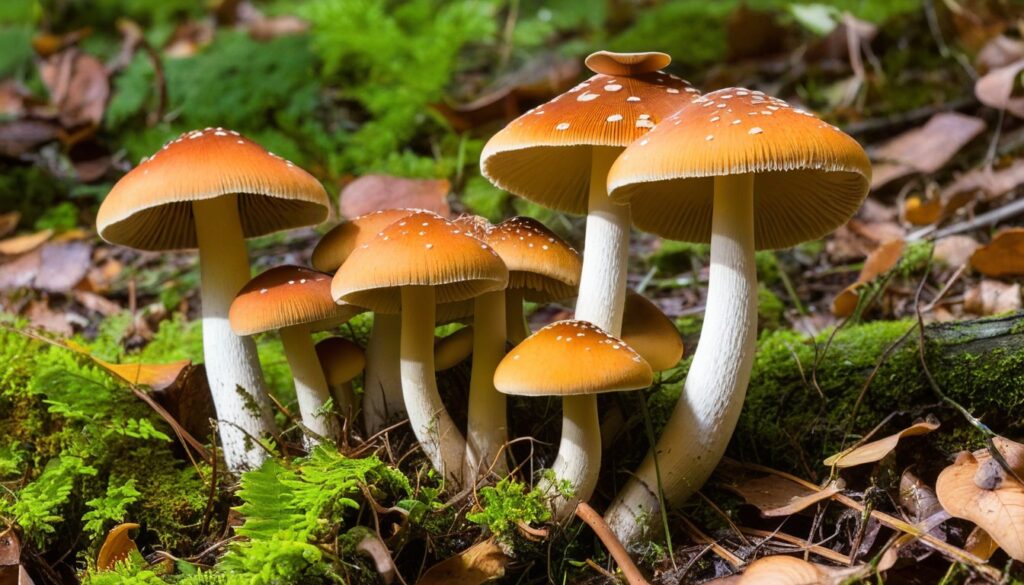Are you curious about the types of mushrooms growing in your Florida yard? Whether you’re a nature enthusiast or simply want to understand the fungal flora in your own backyard, this identification guide can help you differentiate between different species.
From common varieties to toxic and edible mushrooms, this comprehensive guide covers all the essentials for safe mushroom exploration. Learn how to identify mushrooms and understand the importance of proper identification.
Key Takeaways:
- Identifying mushrooms in your Florida yard is crucial for safety
- Common mushrooms and potential hazards they pose
- Techniques to distinguish between edible and poisonous mushrooms
- Environmental factors that impact mushroom growth
- Tips for safely removing mushrooms from your yard
The Importance of Mushroom Identification
Identifying mushrooms in your yard is not just about enhancing your knowledge of fungal species, but also ensuring the safety of yourself, children, or pets who may come into contact with them. While some mushrooms may be harmless, others can be potentially toxic or deadly. This is why correctly identifying the species before engaging with them is crucial.
Not all mushrooms are created equal, and some may have harmful effects on the body. Symptoms of mushroom poisoning can range from mild to severe, with some cases leading to hospitalization or even death. Identifying toxic mushrooms and taking preventative measures can make a significant difference in preventing accidental ingestion.
In addition, knowing how to identify edible mushrooms can open up a whole new world of culinary possibilities. By mastering the art of mushroom identification, you can forage wild mushrooms that are both safe and delicious to consume.
“Knowing the difference between edible and poisonous mushrooms can be the difference between a delightful meal and a trip to the emergency room.”
Overall, the importance of mushroom identification cannot be overstated. In the following sections, we will explore the most common Florida yard mushrooms to empower you with the knowledge and skills to identify them confidently.
Common Florida Yard Mushrooms
If you’re new to identifying mushrooms, it’s important to understand that many species look similar, and it takes an expert eye to distinguish them. Here are some of the most common mushrooms you might encounter in your Florida yard:
|
Mushroom |
Description |
Potential Risks |
|---|---|---|
|
Armillaria mellea (Honey Fungus) |
A honey-colored mushroom with a cap that gets darker towards the middle and a white stem that grows in clusters on trees and stumps. |
Can kill trees and may cause digestive issues if ingested raw. |
|
Chlorophyllum molybdites (False Parasol) |
A large, white mushroom with a brown cap that has scales, growing in grassy areas. The stem has a snakeskin-like pattern. |
Can cause severe stomach upset or worse, and is often confused with the edible parasol mushroom, so it’s best to avoid consuming. |
|
Coprinus comatus (Shaggy Ink Cap) |
A tall, thin, white mushroom with a shaggy cap that turns black and inky as it ages, found growing in lawns or disturbed soil. |
May not be toxic but can interact with alcohol, which can cause disulfiram-like reactions (stomach discomfort, flushing, and headache). |
|
Macrolepiota procera (Parasol Mushroom) |
A large, brown mushroom with a scaly cap and a long, slender stem that grows in grassy areas. It is one of the few edible mushrooms found in Florida. |
A delicious and safe edible mushroom, but always properly cook and never consume raw. |
|
Stereum ostrea (False Turkey Tail) |
A shelf-like mushroom that grows on trees, logs or stumps, orange-brown in color with a smooth top and a white bottom. |
May cause digestive issues if ingested raw. |
Remember that there are many species of mushrooms not included in this table and that mushroom identification can be tricky, so always err on the side of caution, especially if you plan on consuming them. If you suspect a mushroom is toxic, do not touch or attempt to pick it. Instead, contact a local expert for advice.
Identifying Edible Mushrooms
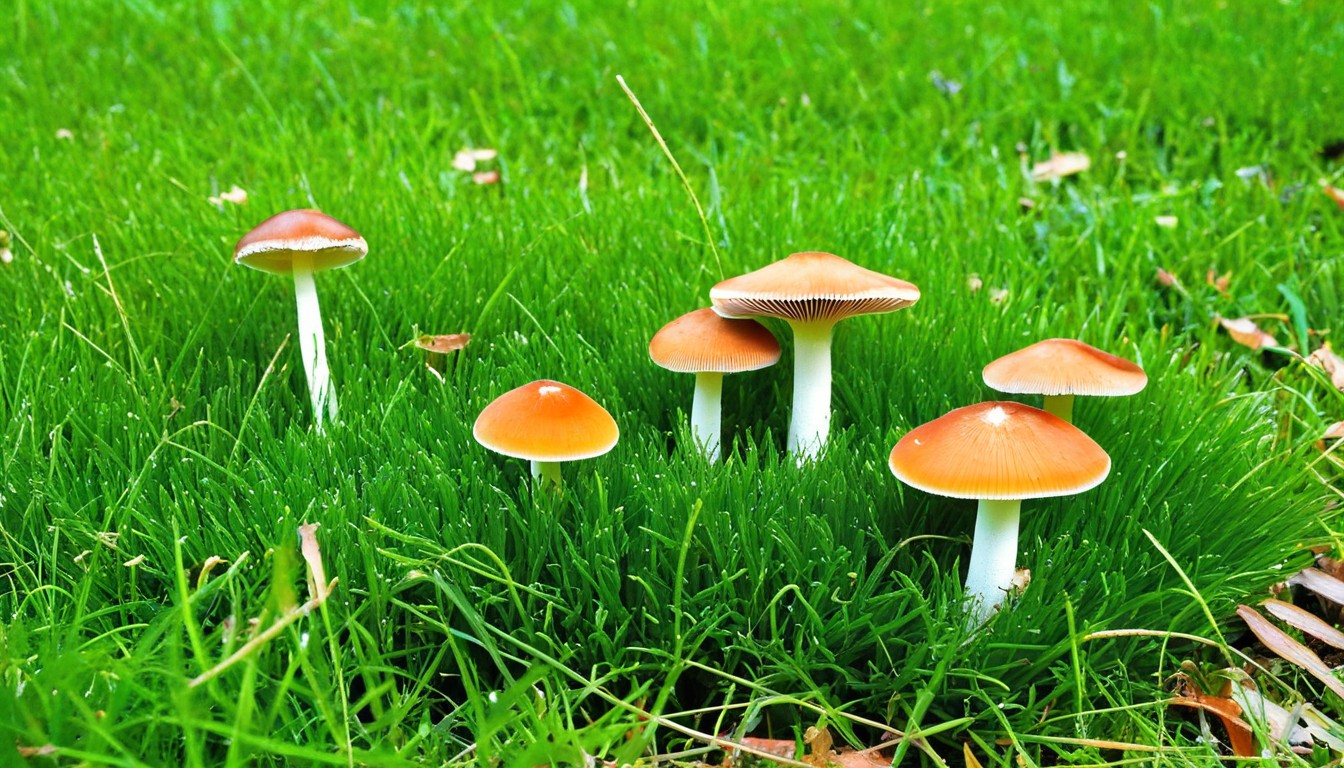
Foraging for edible mushrooms can be a rewarding pastime, but safety should always come first. It’s crucial to properly identify each species before harvesting and consuming. Here are some tips to help you identify edible mushrooms in your Florida yard:
|
Mushroom |
Description |
Edibility |
|---|---|---|
|
Amanita caesarea |
Orange or yellow cap and stem with white flesh. Found in sandy soil near oak trees. |
Edible |
|
Boletus edulis |
Brown cap with white or yellow pores under the cap. Found near pine and oak trees. |
Edible |
|
Chanterelle |
Golden-yellow cap with a funnel shape and wavy edges. Found in damp areas near oak or pine trees. |
Edible |
|
Maitake |
Large, fan-shaped mushroom with a brown-gray cap. Found near oak trees. |
Edible |
Remember to always verify the identification of mushrooms with an expert if you are unsure. It’s important to avoid consuming any toxic or poisonous mushrooms, as they can cause serious health issues or even be fatal. Happy foraging!
Toxic and Poisonous Mushrooms in Florida Yards
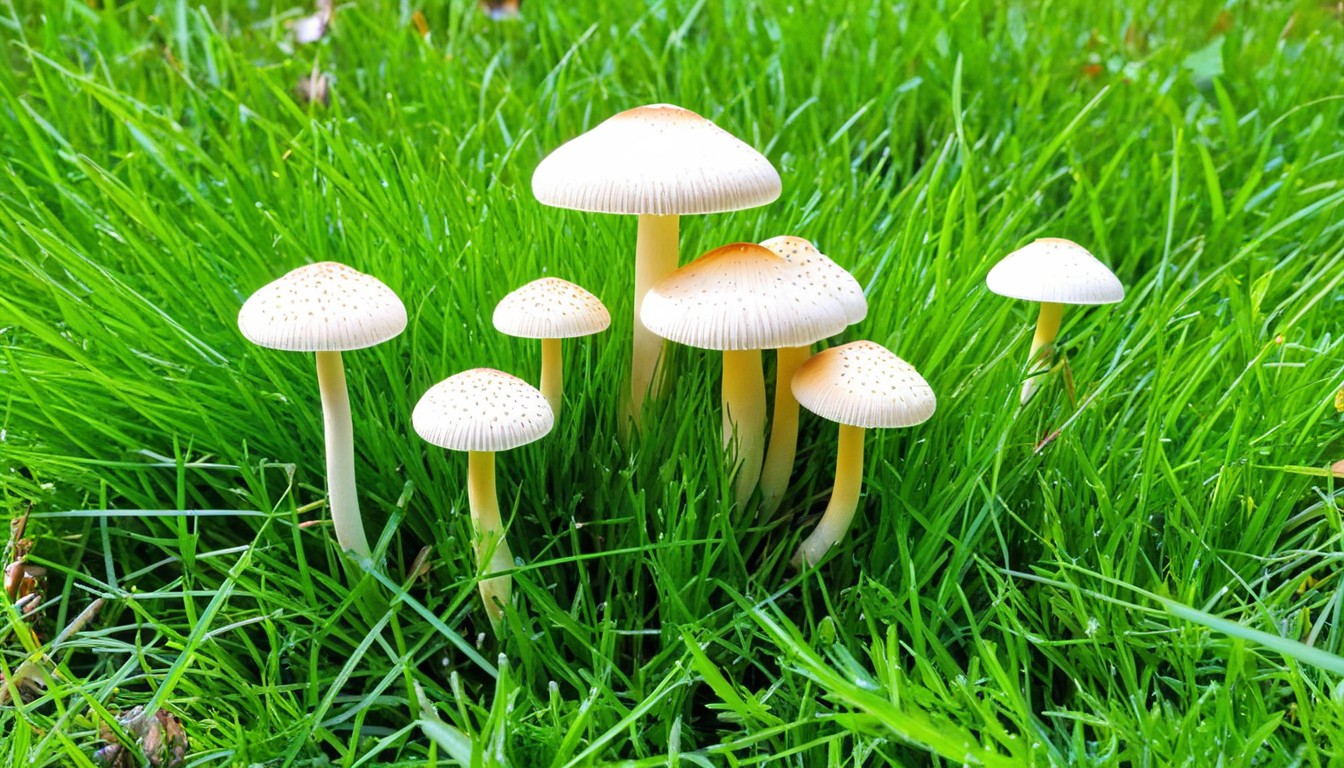
When exploring mushrooms in your Florida yard, it’s important to be aware of toxic and poisonous species. Some mushrooms may look harmless but can cause severe illness or even be fatal if ingested. Below are some examples of toxic and poisonous mushrooms commonly found in Florida yards:
|
Mushroom |
Toxicity Level |
Description |
|---|---|---|
|
Amanita phalloides |
Extremely poisonous |
A deadly mushroom commonly known as the Death Cap. It has a beige cap and white gills with a ring on the stem. |
|
Inocybe |
Toxic |
Small, light-colored mushrooms with slender stems and brownish caps. Some species contain the toxin muscarine. |
|
Galerina |
Poisonous |
Small brown mushrooms with dark gills that are often found growing on decaying wood. They contain the toxin amatoxin. |
To avoid the dangerous consequences of mushroom poisoning, it’s crucial to correctly identify any mushrooms before interacting with them. If you’re unsure about a species, it’s best to avoid it altogether.
If you suspect that you or someone else has ingested a toxic mushroom, seek medical attention immediately and try to bring a sample of the mushroom with you for identification.
Effects of Mushroom Poisoning
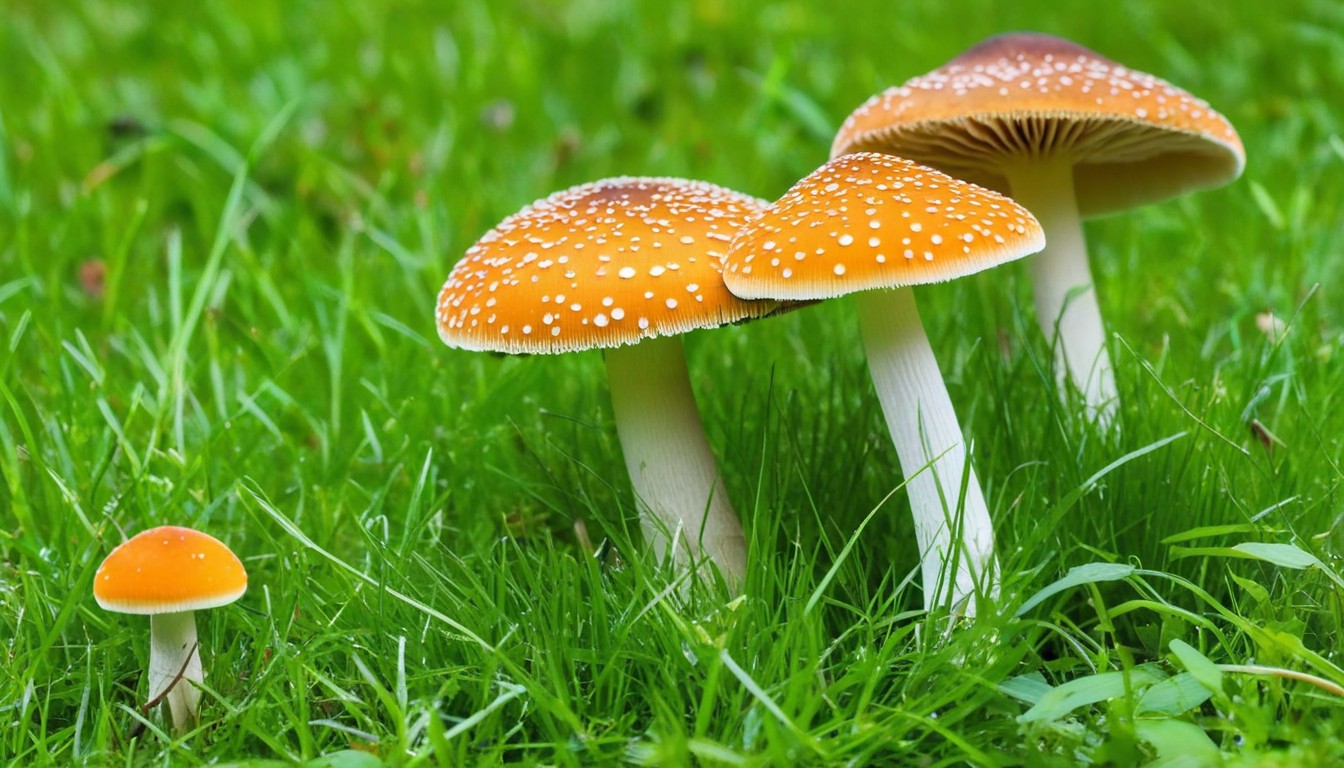
While mushrooms can be a delicious addition to any meal, it is crucial to be aware of the potential health risks associated with certain species. Understanding the effects of mushroom poisoning can help you identify symptoms and seek appropriate medical attention if needed.
Symptoms of Mushroom Poisoning
The symptoms of mushroom poisoning can vary based on the type of mushroom and the amount consumed. Common symptoms may include:
- Nausea and vomiting
- Stomach pain and cramping
- Diarrhea
- Dizziness
- Headaches
- Weakness and fatigue
- Loss of coordination
In some cases, mushroom poisoning can lead to more severe symptoms such as hallucinations and liver damage. It is important to seek medical attention immediately if you suspect mushroom poisoning.
What to Do in Case of Mushroom Poisoning
If you or someone you know has ingested a toxic mushroom, do not induce vomiting, as this can further damage the digestive system. Instead:
- Call your local poison control center or emergency services for immediate medical attention.
- If possible, take a picture or save a sample of the mushroom for identification purposes.
- Provide as much information as possible about the time of ingestion, symptoms, and any pre-existing health conditions.
Environmental Factors Affecting Mushroom Growth
Mushrooms are fascinating organisms whose growth is heavily influenced by several environmental factors. Understanding these factors can help you manage or encourage mushroom growth in your Florida yard.
Temperature
Temperature affects mushroom growth by controlling the metabolic rates of the fungi. Most mushrooms require a temperature range between 60°F and 75°F to germinate and grow. However, some species are more tolerant of hotter or cooler temperatures. For example, the oyster mushroom thrives in warmer temperatures up to 85°F, while the shiitake mushroom prefers cooler temperatures around 50°F.
Moisture
Moisture is essential for mushroom growth, as fungi need it to support their growth and to absorb nutrients from their surroundings. Moisture levels also affect the size and shape of mushrooms. For example, the more moisture a mushroom contains, the more plump and fleshy it will appear. However, too much moisture can stimulate bacterial growth and attract pests, which can be detrimental to mushroom growth.
Soil Composition
The composition of soil affects mushroom growth by providing nutrients and a hospitable environment for the fungi. Some species of mushrooms require specific soil compositions to grow. For example, chanterelle mushrooms thrive in acidic soils with low nitrogen content, while morel mushrooms prefer alkaline soils that are rich in organic matter.
Other factors that can influence mushroom growth include light, humidity, oxygen levels, and the presence of other organisms in the surrounding environment. Understanding these factors can help you create the ideal conditions for mushroom growth in your yard or avoid conditions that deter mushroom growth.
Encouraging or Discouraging Mushroom Growth in Your Yard
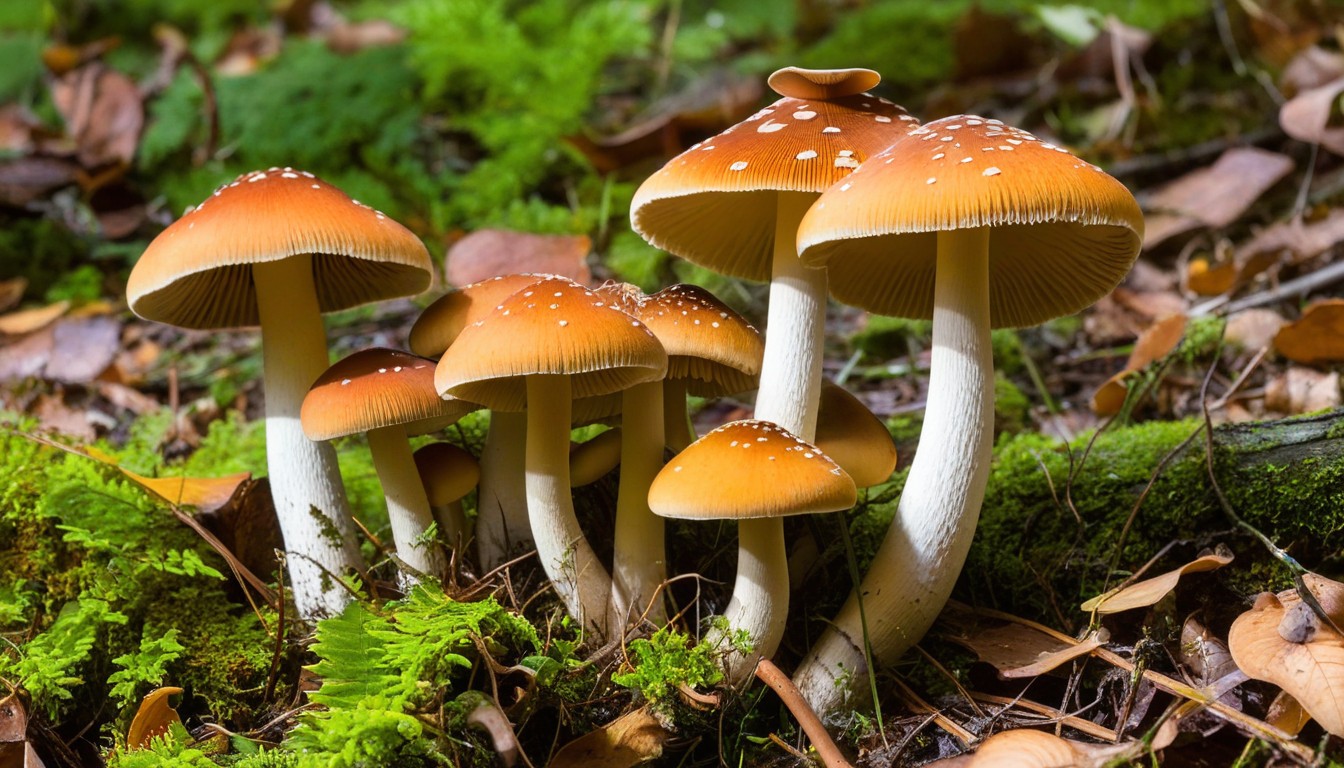
Mushrooms can add a unique and charming quality to any yard, but they can also be harmful if consumed or cause damage to plants. Fortunately, you have some control over whether or not they grow. Here are some methods to encourage or discourage mushroom growth, depending on your preference.
Encouraging Mushroom Growth
If you enjoy having mushrooms in your yard and want to encourage their growth, there are a few things you can do:
- Provide shade: Mushrooms love shady, damp areas, so adding more shade to your yard can create ideal conditions.
- Water often: Regular watering can increase moisture levels and help mushroom spores take hold and grow.
- Add organic matter: Mushrooms thrive on decomposing organic matter, so incorporating more compost or wood chips into your soil can help create the ideal conditions for them to grow.
Discouraging Mushroom Growth
If you would rather minimize or eliminate mushrooms in your yard, here are some things you can try:
- Reduce shade: Mushrooms need shade to grow, so trimming back trees and bushes or thinning out vegetation can make areas less conducive to spores taking root.
- Improve drainage: Overly damp soil can foster mushroom growth, so improving your yard’s drainage can help prevent spores from taking hold.
- Remove organic matter: Clearing out dead leaves, plants, and other decomposing organic matter can reduce the amount of food and habitat available to mushrooms, making them less likely to grow.
Regardless of whether you choose to encourage or discourage mushroom growth in your yard, it’s important to remember that some varieties can be poisonous and pose a risk to young children and pets. Always err on the side of caution and consult with a mushroom expert or medical professional if you are unsure about any species you encounter.
Safely Removing Mushrooms from Your Yard
Removing mushrooms from your yard isn’t just for aesthetic purposes. It also helps to prevent accidental ingestion by children and pets. Here are some tips to remove mushrooms safely:
- Wear Gloves: Always put on gloves before handling mushrooms to prevent skin irritation or allergic reactions.
- Use a Small Shovel or Trowel: Dig around the base of the mushroom, then gently pull upward to remove it entirely.
- Avoid Breaking the Stem: Breaking the stem of the mushroom can release spores, leading to further growth.
- Dispose of Mushrooms Properly: Put mushrooms in a secure bag or container and dispose of them in the trash. Do not compost them or throw them in a yard waste bin, as this can spread the spores.
Remember to check your yard regularly for any new mushrooms. Swift and safe removal can prevent further mushroom growth and ensure the safety of you and your loved ones.
Conclusion
Congratulations, you’ve reached the end of our comprehensive Florida mushrooms identification guide! We hope you found this article informative and enjoyable to read. Remember, mushroom identification is crucial to ensure your safety and the safety of your loved ones. Always consult with experts if you are uncertain about any species you encounter, and prioritize safety above all else.
By recognizing common Florida yard mushrooms, identifying edible and toxic species, understanding environmental factors affecting mushroom growth, and safely removing mushrooms from your yard, you can confidently explore the fascinating world of fungi. Whether you’re a forager or a curious observer, discovering the diverse fungal flora in your own backyard is a rewarding experience.
Thank you for reading, and happy mushroom hunting!
FAQ
Why is it important to correctly identify mushrooms in my yard?
It is important to correctly identify mushrooms in your yard to ensure the safety of yourself, children, or pets who may come into contact with them. Some mushrooms can be toxic or poisonous if ingested or touched.
What are the most common types of mushrooms found in Florida yards?
Some of the most common types of mushrooms found in Florida yards include the Florida Waxcap, the Stinkhorn Mushroom, and the Puffball Mushroom. These mushrooms vary in appearance and characteristics.
How can I identify edible mushrooms in my yard?
Identifying edible mushrooms requires knowledge and experience. It is recommended to consult with a seasoned forager or mycologist who can guide you through the identification process. Additionally, there are field guides and online resources available to help you learn about edible mushroom species.
What are the potential effects of mushroom poisoning?
Mushroom poisoning can cause a range of symptoms, including nausea, vomiting, abdominal pain, dizziness, and in severe cases, organ failure and death. It is essential to seek medical help immediately if you suspect mushroom poisoning.
What environmental factors contribute to mushroom growth in yards?
Environmental factors that contribute to mushroom growth in yards include temperature, moisture levels, and the composition of the soil. Mushrooms thrive in damp, shaded areas with organic matter present in the soil.
How can I encourage or discourage mushroom growth in my yard?
To encourage mushroom growth, you can create conditions such as providing shaded and moist areas, using a nutrient-rich soil, and allowing decaying organic matter to accumulate. To discourage mushroom growth, ensure proper drainage, reduce shade, and maintain a well-aerated soil.
How can I safely remove mushrooms from my yard?
To safely remove mushrooms from your yard, wear gloves and use a small hand shovel or knife to cut the mushrooms at the base. Dispose of the mushrooms in a sealed bag or container to prevent the spores from spreading. Avoid direct contact with the spores or inhaling them.

